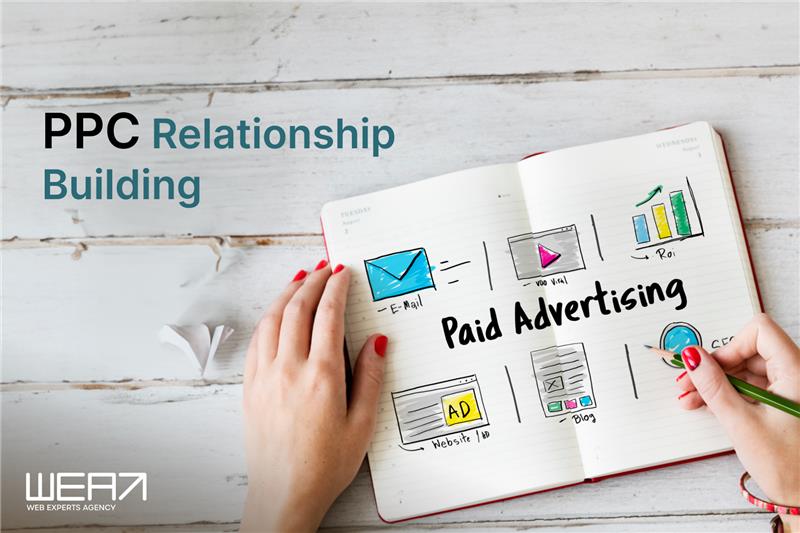
Despite the surge in organic traffic, PPC campaigns retain their value as one of the most effective strategies. They provide precise control over ad spending and offer access to potential customers actively seeking relevant products or services. Platforms like Google Ads, Bing Ads, and Facebook Ads empower businesses to drive targeted traffic, generate leads, and boost sales. Leads, representing potential customers, form the lifeblood of a business, driving revenue and growth. Effective lead generation and nurturing are essential, with strategies like lead qualification and scoring ensuring resources are focused on the leads with the highest conversion potential.

What is a PPC Campaign?
Advertisers are charged a fee in a Pay-Per-Click (PPC) campaign whenever a user clicks on one of their online ads. It involves purchasing website visits instead of obtaining them through organic methods like Search Engine Optimization (SEO). Here’s how a typical PPC campaign works:
Ad Creation:
Advertisers create ads that are displayed on search engines like Google or various websites and social media platforms. These ads usually consist of a headline, a description, and a link to a landing page.
Keyword Selection:
Advertisers select specific keywords or phrases relevant to their products or services. These keywords determine when and where their ads will appear. Approximately 75.5% of marketers use keyword research when crafting content for consumers and businesses.
Bidding:
Advertisers bid on how much they will pay for each click on their ads. The bid amount, along with the quality and relevance of the ad and landing page, influences the ad’s position in search results or on websites.
Ad Display:
When users search for keywords that match the ones advertisers are targeting or visit websites that display ads, the search engine or ad network uses an auction system to decide which ads to display. The winner of the auction gets their ad shown to the user.
Clicks and Costs:
If a user clicks on the ad, the advertiser is charged a certain amount (the cost per click or CPC), and the user is directed to the advertiser’s website or landing page.
Conversion Tracking:
Advertisers often set up conversion tracking to measure the actions taken by users after clicking the ad, such as making a purchase, signing up for a newsletter, or filling out a contact form.
Why do we need Leads?
In business and marketing, leads are individuals or entities who have expressed interest in a company’s products or services. Lead generation, considered a key metric for marketing success, poses a top challenge for 63% of marketers. Typically, leads are potential customers who have taken some action, such as filling out a contact form, subscribing to a newsletter, or downloading a resource, indicating their interest in what the business offers. Leads serve a crucial role in business operations:
Revenue Generation:
Leads are potential customers who have expressed interest in a product or service. Converting leads into paying customers is most businesses’ primary revenue source.

Cost Efficiency:
Compared to cold outreach, leads are often more cost-effective to convert into customers. They have already shown interest, reducing the need for extensive marketing and sales efforts.
Marketing Insights:
Leads provide valuable data about customer preferences, behaviours, and demographics. This information helps businesses refine their marketing strategies and target their audience more effectively.
Competitive Advantage:
A robust lead generation system can give a business a competitive edge in the market. It allows the company to stay proactive and ahead of competitors.
Relationship Building:
Generating and nurturing leads is an opportunity to build relationships with potential customers. Establishing trust and rapport during the lead nurturing process can lead to long-term customer loyalty.

Stability and Sustainability:
A steady stream of leads ensures a stable and sustainable business model. It reduces dependency on a small customer base and minimizes the impact of customer churn.
Innovation and Product Development:
Customer feedback from leads can inform product or service improvements and innovations, helping a business stay relevant and competitive.
What is a Quality Lead?
A quality lead, often called a “qualified lead,” is a potential customer or prospect more likely to become a paying customer because they have demonstrated a genuine interest in a product or service and meet specific criteria. Quality leads are valuable to businesses because they have a higher probability of conversion, which can result in increased sales and revenue. Here are some characteristics that define a quality lead:
Expressed Interest:
Quality leads have shown a clear interest in a product or service. This interest can be demonstrated by filling out a contact form, subscribing to a newsletter, downloading a whitepaper, or engaging with content.
Relevance:
A quality lead aligns with the target audience or ideal customer profile defined by the business. They have characteristics that make them a good fit for the product or service.
Budget and Authority:
In B2B (business-to-business) scenarios, a quality lead often has the budget and authority to make purchasing decisions. They are in a position to move forward with a potential transaction.
Engagement:
Quality leads engage with the business’s content, website, or marketing materials beyond initial interaction. They may revisit the website, interact on social media, or respond to follow-up communication.
Information Completeness:
Quality leads provide accurate and complete contact information, making it easier for the business to reach out and nurture the lead through sales.
Consent:
Quality leads have provided consent for the business to contact them or have subscribed to communications willingly, ensuring compliance with privacy and anti-spam regulations.
Scoring:
Some businesses use lead scoring systems to assess the quality of leads based on various criteria. Leads with higher scores are typically considered of higher quality.
How to Generate a Quality Lead?
Efficient lead nurturing results in a 50% increase in sales-ready leads while reducing costs by 33%. Generating quality leads involves a strategic approach combining marketing and sales efforts to attract and engage potential customers genuinely interested in your product or service. Here’s a step-by-step guide on how to generate quality leads:
Step 1: Define Your Target Audience:
- Identify and understand your ideal customer profile (ICP). Who are they, and what are their needs and pain points?
Step 2: Create Valuable Content:
- Develop high-quality, informative, and relevant content that addresses your target audience’s problems and interests.
- Content can include blog posts, ebooks, webinars, videos, infographics, and more.
Step 3: Optimize Your Website:
- Ensure your website is user-friendly, mobile-responsive, and loads quickly.
- Create clear calls-to-action (CTAs) on your website and landing pages to encourage lead capture.
Step 4: Landing Pages and Forms:
- Build dedicated landing pages for specific offers or campaigns.
- Use concise and compelling forms to collect lead information, but don’t ask for too much at once.
Step 5: Use Social Media:
- Promote your content and offers on social media platforms.
- Engage with your audience by responding to comments and messages.
Step 6: Email Marketing:
- Create an email marketing strategy to nurture leads over time.
- Send personalized, relevant content to keep leads engaged.
Step 7: Referral Programs and Partnerships:
- Encourage satisfied customers to refer leads to your business.
- Form partnerships or affiliate programs to tap into other businesses’ audiences.
Step 8: Lead Scoring and Segmentation:
- Implement lead scoring to prioritize and categorize leads based on their conversion readiness.
- Segment leads into different lists based on interests and behaviors.
Step 9: Automated Lead Nurturing:
- Set up email workflows and automation to deliver personalized content to leads at the right time.
- Gradually move leads through the sales funnel.
Step 10: Analytics and Optimization:
- Continuously monitor and analyze the performance of your lead generation efforts.
- Adjust your strategy based on data insights to improve lead quality and conversion rates.
By following these steps and maintaining a consistent and data-driven approach, you can generate quality leads more likely to convert into satisfied customers, ultimately contributing to your business’s growth and success.
PPC Campaign and Quality Leads
A PPC (Pay-Per-Click) campaign is one of the most effective ways to generate quality leads for your business when executed strategically. Here’s how a well-managed PPC campaign can help you attract and convert high-quality leads:
Targeted Keyword Selection:
- Choose specific keywords that align with the intent of users looking for your product or service.
- Use keyword match types (broad match, phrase match, exact match) to control the relevance of your ads to user queries.
Compelling Ad Copy:
- Craft persuasive ad copy that communicates the benefits of your offering.
- Include relevant keywords in your ad text to improve ad relevance.
Landing Page Relevance:
- Ensure that the landing page you link to closely aligns with the ad’s message and the user’s expectations.
- Deliver on the promise made in the ad to maintain user trust.
Quality Score Improvement:
- Work on improving your ad’s Quality Score, as it directly impacts your ad’s position and costs.
- Focus on improving ad relevance, landing page experience, and expected click-through rate.
Conversion Tracking:
- Implement conversion tracking to measure lead generation.
- Set up conversion goals for form submissions, phone calls, or downloads.
Geotargeting:
- Use geotargeting to show your ads to users in specific locations where your products or services are available.
- It helps ensure that you’re attracting leads from your target market.
Analytics and Optimization:
- Regularly analyze the performance of your PPC campaigns.
- Adjust your strategy based on data insights to focus on keywords, ads, and placements that yield high-quality leads.
Consistent monitoring, testing, and optimization are key to maximizing the effectiveness of your PPC efforts in generating quality leads. By employing an effective PPC campaign, you can drive traffic to your website and attract high-quality leads who are more likely to engage with your offerings and ultimately become valuable customers.
Conclusion
Businesses can harness the power of quality leads by following a systematic approach to lead generation, including defining target audiences, creating compelling content, and implementing lead scoring. When integrated with well-managed PPC campaigns focusing on targeted keywords, persuasive ad copy, and relevant landing pages, the result is a potent strategy for attracting and converting high-value leads. Continuous analysis, optimization, and tracking further fine-tune these efforts, making PPC campaigns an indispensable tool for businesses seeking success in the digital realm.
FAQs
Q. Are PPC campaigns suitable for all businesses?
A. PPC can benefit various businesses, but results vary based on factors like industry competition and budget.
Q. What’s the typical cost of generating leads through PPC?
A. PPC costs vary by industry, location, and competition. Budgets are set, and you pay per click.
Q. How can I measure PPC campaign success in lead quality?
A. Track lead actions post-click, like form submissions or purchases. Also, analyze customer retention and lifetime value for long-term impact assessment.




